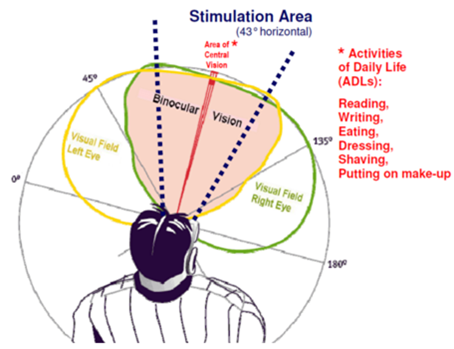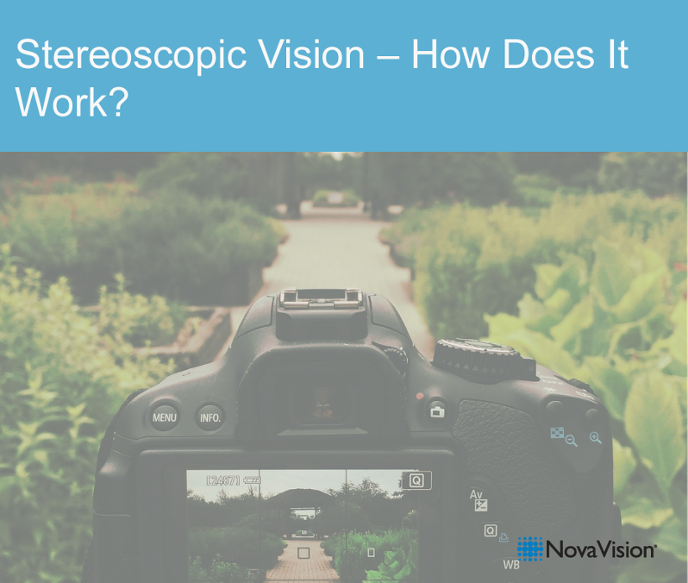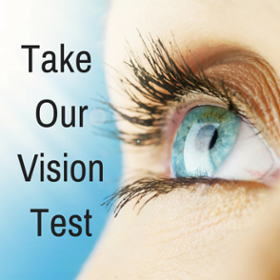
Depth perception – the ability to see our environment three-dimensionally – is based on “Stereoscopic vision”, which requires two intact eyes that are aligned and move synchronously.
Try the following: place a round patterned object, e.g. a painted coffee cup, at arm’s length on the table in front of you. Select a dot from the pattern and move a pointed pencil exactly to this dot. No problem. Now close one eye and try again – you move the pencil in direction of the dot and you notice that you have no idea how far away the dot is. To hit the dot you need to adjust your movement several times.
When you look straight into distance, your eyes are parallel to each other. The areas seen with the right and with the left eye overlap to a certain extent. With the left eye you see not only what happens at the left side of your body, but also what happens at the center and partially at the right side and vice versa.

The largest part of the visual field is seen binocularly, in other words with two eyes. Since our eyes are up to 2½ inches apart from each other, we receive two different pictures of our environment from the left and from the right eye. The brain “computes” the spatial information from the difference between the two pictures on the retina and creates a joint overall image, which provides extra information about distance to an object. This process is called stereoscopic vision.
You can get an impression of both individual images when you focus your eyes on a distant point and then hold a finger close to your face. You will see the finger with your right and with your left eye at the same time, but since it is not in the focus area, it cannot be calculated into a joint overall image, so you see two fingers. Now close first the left and then the right eye: the finger “jumps“ first to the left, then to the right side. This is because you now see the two single images processed by each eye separately. In this special scenario, when viewed with both eyes, you are creating a double image.
The ability to focus with both eyes, that means to direct both eyes by control of the eye muscles in alignment to a certain point and fixate for further examination, is something learned in the early months after birth. This is why you can often observe babies squinting during these first months, which becomes less and less over time.
In order to process spatial image information faster – in splits seconds – our brain relies on our previous experience to save “computing power“. This is why we get a lot of spatial information also when using only one eye, or why we see spatial depth also in two-dimensional images such as on a TV screen.
The following picture depicts several experiences:
1. We have learned that objects that are partially hidden are behind other objects. Therefore, you perceive that columns which obscuring other columns are closer to you.
2. The perceived object size is also a clue. A larger object is perceived to be closer to the viewer than a similar but smaller object.
3. The phenomenon of linear perspective: the columns converge at the end of the hall but are perceived as “parallel but further away”.
4. The position of the shadow of an object, or objects located in the shadow, give additional spatial information.
These are all image impressions that can be processed with one eye only. They do not provide “real“ spatial information, but can be used to create a depth impression in a two-dimensional picture.
These experiences can also be used for optical illusions, and can create an impression of an incorrect image. See also our blog on visual hallucinations and illusions.
Stereoscopic vision after stroke or brain injury
So we have learned that, even though we feel that our experiences allow us to grasp spatial depth and spatial relationships between objects with one eye only, “real“ three-dimensional vision requires an overlapping visual image of two eyes.
Stereoscopic vision is often difficult for people who have a large visual field defect due to a stroke or other brain injury. They may have homonymous hemianopia and not be able to process the visual information in the complete left or right half of the visual field of both eyes. The section of the visual field that is needed for an overlapping image is missing, and therefore homonymous hemianopia can also result in loss of sterescopic vision and perception of spatial depth.
NovaVision’s Vision Restoration Therapy can help to recover the visual field and help people regain their stereoscopic vision after stroke or brain injury. Find out more here or contact us to discover how NovaVision can help you or your loved one recover.
Written By: Sigrid Kenkel
References
http://www.psychologie.uni-heidelberg.de/ae/allg/lehre/wct/w/w6_raum/w640_binokulare_tk.htm
http://irtel.uni-mannheim.de/lehre/seminararbeiten/w96/Tiefe/binoc.html


